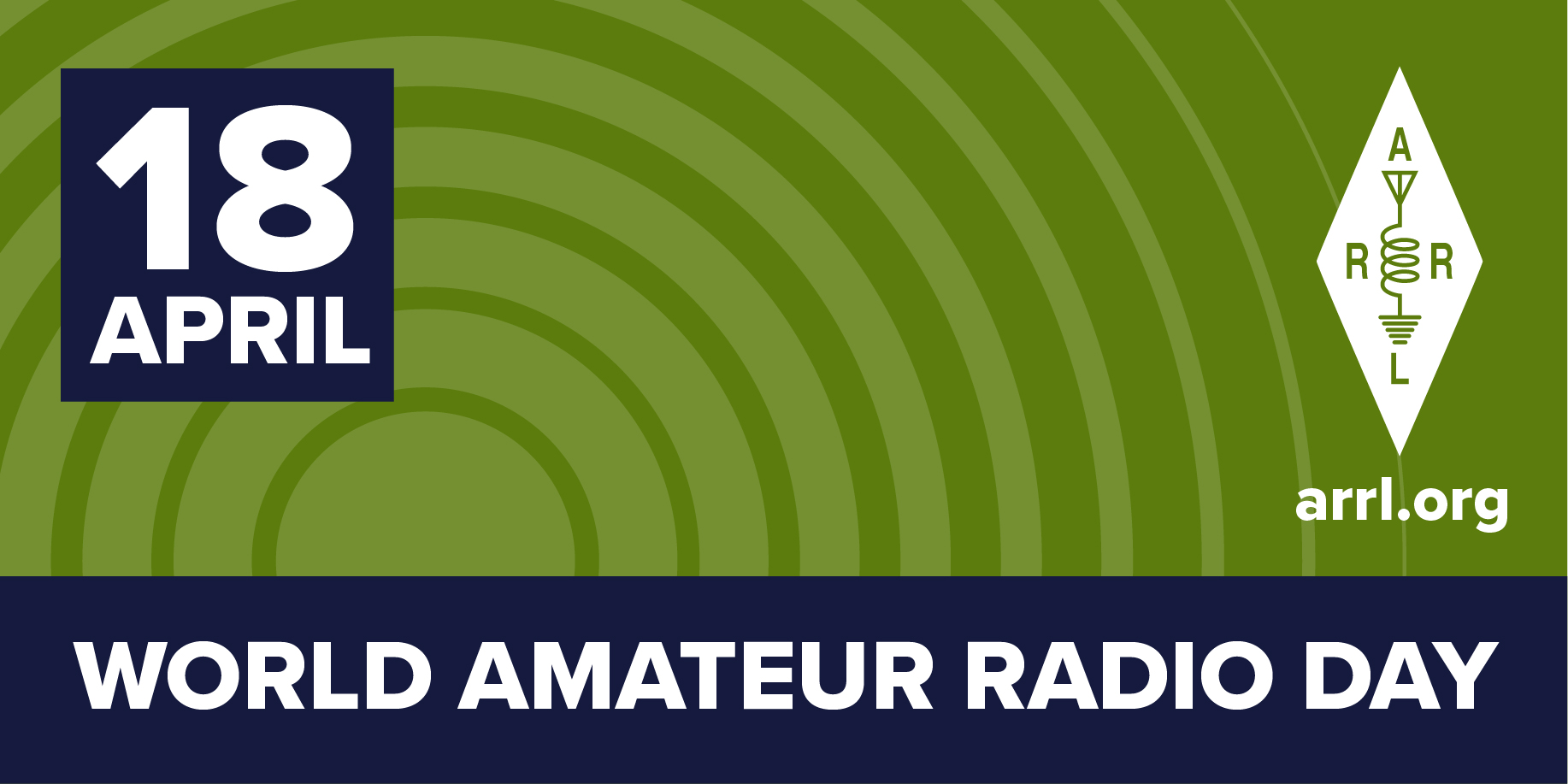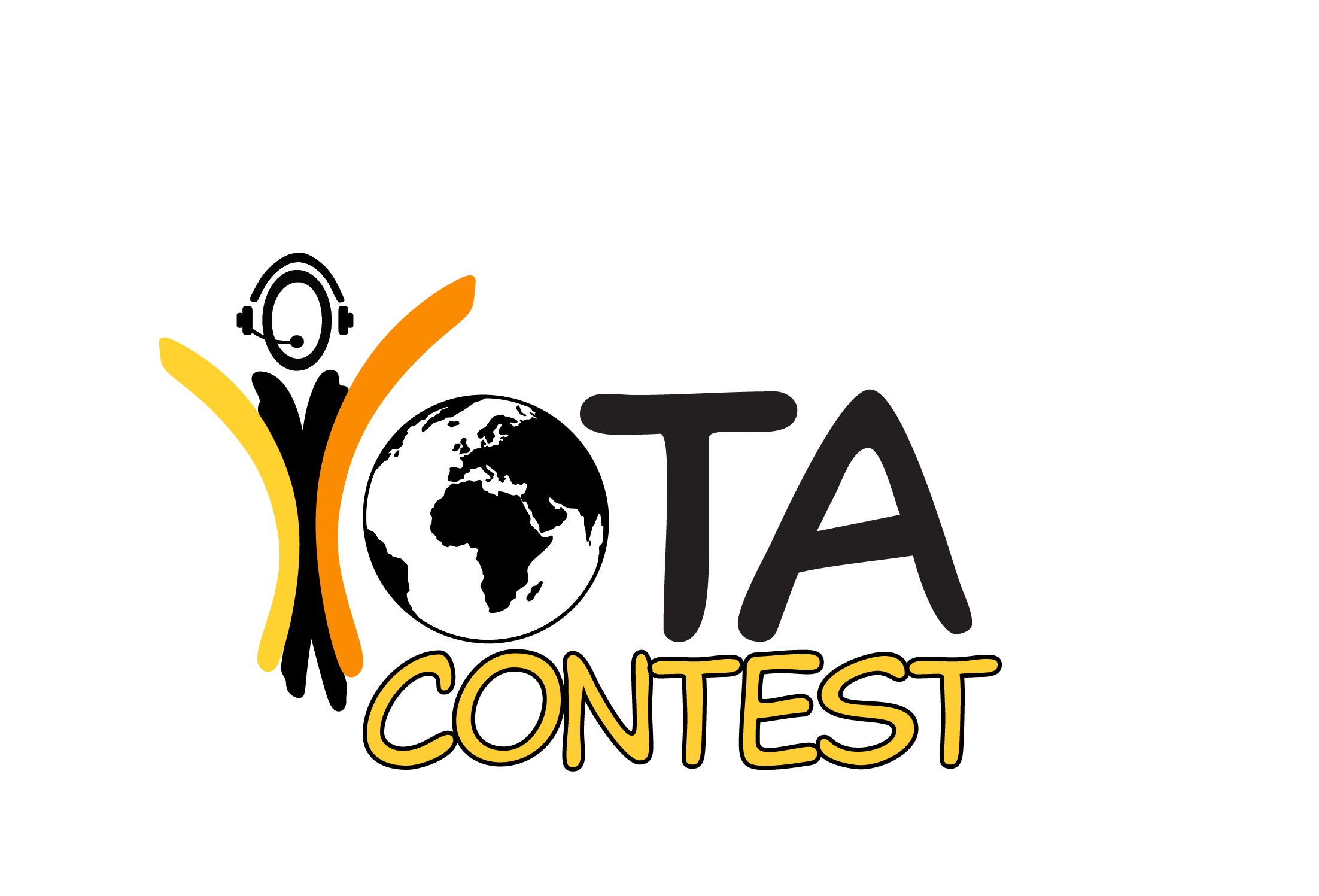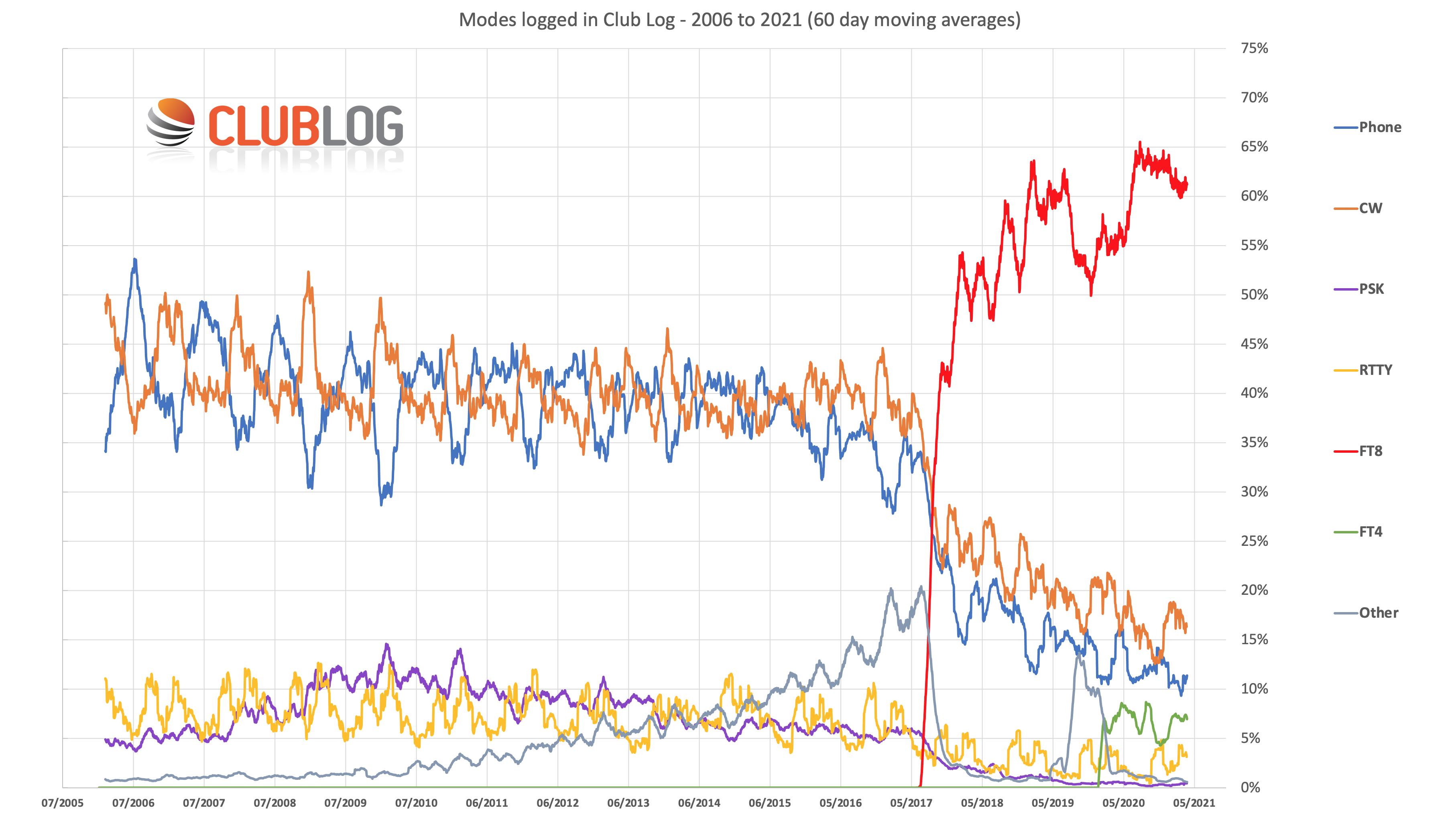 April 14, 2021 Editor: Paul Bourque, N1SFE | ||||
IN THIS ISSUE
The SSB ARRL Rookie Roundup is coming up on April 18. This 6-hour event from 1800-2359 UTC happens to align with World Amateur Radio Day. If you're on the air that day, you could also look for the special call signs from Radio Amateurs of Canada (RAC), with the RAC suffix. Other activities this weekend include the CW-only CQMM Contest, where everyone works everyone with differing point values (see the rules), and the multipliers are DX entities and Brazilian prefixes. Ontario's QSO Party is April 17 and 18, and counts toward the State QSO Party Challenge. For domestic fun, try the Texas State Parks on the Air, or the Michigan QSO Party. Texas has 89 state parks, but the contest also includes Texas State Historic Sites, swelling the multiplier count to 110. The Michigan QSO Party counts the 83 Michigan counties as multipliers for non-Michiganders. As always, see the rules! The following weekend has the Florida QSO Party, sponsored by the Florida Contest Group. Florida allows multi-operator classes to be "dispersed" across the Florida County, State/Province, or DXCC entity as the case may be, as many other contests have allowed in these times. Sixty-seven Florida counties are the multipliers for out of state entries. Complete information for all contests follows the Conversation section 15 Apr - 28 Apr 2021 April 15 April 16 April 17
April 18
April 19 April 20 April 21 April 22 April 23 April 24
April 25 April 26 April 27 April 28 The SSB ARRL Rookie Roundup is Sunday, April 18, 2021 from 1800 to 2359 UTC, and takes place this year during World Amateur Radio Day. The Rookie Roundup is aimed at hams licensed for 3 years or less. Why not use the opportunity to wish participants "Happy World Amateur Radio Day 2021" on the air?
Last year's Contest University (CTU) held via Zoom allowed gathered more contesters and contesters-to-be than ever before in a single event. Tim, K3LR, and the esteemed Contest University "professors" are back again this year on May 20, 2021 for the 2021 CONTEST UNIVERSITY Live via Zoom webinar event. Like last year's event, attendance is free. The conference will consist of individual speakers talking for 45 minutes, followed by 15 minutes of questions and answers. If you cannot watch the sessions live, they'll be available on YouTube after the event is over. As of this writing, the schedule is as follows:
As a bonus, "four Icom HF Transceivers will be given away during CTU at random times. You must be registered in Zoom and present during the random time drawing." Contest University thanks Hamvention, Icom America, and DX Engineering for donating the radios and to QTH.com for website hosting.
Region 1's YOTA (Youngsters On The Air) have announced a new contest: YOTA Contest 2021. Consisting of three events, each "leg" is only 12 hours on 80 through 10 meters, with eight categories of entries. Four of the entry categories are exclusively for operators 25 and under. Any amateur radio operator may participate, everyone works anyone. CW and SSB may be used, the exchange is RS(T) + Age on January 1. For multi-ops, average the age of all of the ops with 25 as the ceiling. Scoring is based on same or other continent, age of the operator worked. Multipliers are the number of different exchanges worked per band, regardless of mode. As with all contests, see the rules for more information. There will be "plaques for stations scoring in the first places in all categories in each round." Dates and times for the events are:
Jim, AD7UZ, notes that Icom has released a firmware upgrade for the IC-7300. His comments about version 1.40: "My initial impression is Icom has done some cool stuff here." Editor notes: A document from Icom describing the changes is available for download. There are even some new/enhanced CAT commands. Make sure to back up your existing settings if you've customized them, because the update will re-initialize all settings. (Jim, AD7UZ, via WWDXC email reflector) Scott, N3FJP, announces that Amateur Contact Log 6.9 is now available. AC Log 6.9 includes the ability to load and save customized configuration files, better font scaling support for higher resolution displays, improvements to WinKeyer support, a new bulk edit option, and additional T/R radio control. Scott's AZ, MD, NE and SC QSO Party programs have also been updated for recent rule changes. See the N3FJP State QSO Party page for more information.
Michael, G7VJR, the person behind Club Log, does an annual survey of activity, to "reveal trends about how we're using different modes on the bands." He is ONLY sampling Club Log users. He's updated his blog with the most recent data (as of March 27, 2021). As you might imagine, FT8 continues to dominate, accounting for over 60% of the activity of Club Log users. What's more, on 6 meters, almost 85% of all activity is FT8 as logged by Club Log users. His blog highlights a number of other interesting statistics, and is worth reading. J8, St. Vincent and the Grenadines, have recently experienced severe volcanic eruptions, disrupting everyday life and activities. Please be aware of frequencies being used for disaster-related communications, which may include the "nighttime HF frequencies 3815, 7188, or 7162 (all are MHz)." (Thanks to The DailyDX for this information). Blanketing In general, blanketing is the blocking of radio signals by lower layers of the ionosphere, eliminating any possibility of reflection by higher layers of the ionosphere. During the summer months in the northern hemisphere, the ionosphere's E and F1 region can reflect radio signals back to earth and prevent them from reflecting off the higher F2 region during the early evening. The E and F1 region are said to be "blanketing" the F2 region. See Frank's, W3LPL, presentation in the following section for more information. The Central Arizona DX Association hosted well-known contester Frank, W3LPL, for their April meeting. Frank's topic: "HF Ionospheric Propagation." Frank comments on Cycle 25's somewhat underwhelming start, and general characteristics of the ionosphere's layers as the sun's activity increases. Steve, VE6WZ, was one of six presenters for the Contest Club of Ontario 2021 Midwinter Zoom virtual meeting. According to Steve, the video he made of the presentation shows how he "designed and built the station from the very beginning. There are many photos and explanations of the 160-meter transmit array, and my 160-meter receive system as well as station control and switching." Paul, N1SFE, ARRL Contest Program Manager, writes: "Full results of the 2020 ARRL November Phone Sweepstakes and the 2020 160-Meter Contest have been published to contests.arrl.org. In addition to the full results articles, a searchable databases of all events, line scores, certificates and Log Checking Reports are also available on the website." Here's a small extract of what's in the ARRL November Phone Results, written by Scott, K5TA, and Bruce, AA5B: 2020's Sweepstakes entries were up 20% year over year, and there were even significant numbers of contacts on 15 meters. PE, or Prince Edward Island, was a new multiplier in 2020, and it was rare. The one submitted log from VY2NA had 260 contacts (there were at least two other PE stations on according to other logs). SOLP, the "hot" category, was won by K6JO with a "check" of 14. Check is typically the year one was first licensed. You'll have to read the article to find out who is behind that callsign. As far as the 160 Meter Contest results go: More entries than ever before. Though conditions were "down," over half a million QSOs were submitted across nearly 1,695 logs. You'll have to read the very fine results article by Mark, N5OT, for the rundown on the winners, interviews with some of the contest participants, comments just after the heat of the battle, and of course, pictures. The next running of the ARRL 160 Meter Contest is December 3â5, 2021. Shouldn't you let the world know about the results of your contest? Send a link to your results, and a short summary, to contest-update@arrl.org. Characteristics of a Good Exchange Make sure the exchange you are sending meets the needs of the contest rules. If the contest rules state that the exchange is "signal report and state or province," then the exchange should include the signal report and the state or province. If you omit sending the signal report, you've not sent the exchange. Conversely, it is unnecessary, bad practice, and a waste of time to send anything but the required exchange information. Do not send the report you received. Don't be concerned that you're being curt with the other operator -- they are only looking for the exchange. They will not be offended to make the contact as quickly as possible. The Mt. Airy VHF Society's "Cheese Bits" newsletter for April, 2021 provides inspiration for trying EME (Earth-Moon-Earth), aka moonbounce, on the 6-meter band and higher. For some contests, it can be a way to add to your grid and DXCC entity counts. While it's not easy, it's never been easier than it is today: the JT65 mode (and now, Q65) is used with a Yagi or small dish antenna, and 10 to 50 watts of power. Also conveniently described in the newsletter is a project by Paul, W2HRO, for a folding "stressed dish" dish antenna for 1296 MHz, based on earlier work by Al Katz, K2UYH. Chuck, AF4O, has been trying to track down a power-related RFI source near his location for nearly 2 years now. He's been keeping his notes on his web page, including audio spectrum plots, pictures, a log of observations with weather data - everything to help find it. In the last week, he's been able to identify a pole where he's able to hear the arc using an ultrasonic dish, and observe arcing using binoculars. A broken insulator appears to be involved, and he promises to update his web page with the problem's resolution. (via RFI@contesting.com email reflector) Long Term Trends? There was a recent article on Tom's Hardware website about a father's prediction 9 years ago of then-current technologies that he thought his son would never use. Unlike many predictive articles, the author actually came back to grade his foresight. It turns out his 2012 predictions were just slightly more wrong than right, with 15% of his predictions still up for grabs. His predictions included a mix of "raw" technologies, and the human uses of them. For example, whether we would still have wired internet vs Wi-Fi, whether movie theaters would still be a thing, and whether we'd still need glasses to consume content in 3D were all on the list. Thinking about our little contesting corner of the greater amateur radio hobby, I'm not sure anyone from 2012 would have predicted that over the course of 4 years, a new digital mode would appear that would be responsible for over 60% of the contacts on the amateur bands, with the combined number of SSB and CW contacts not even making 30% of the total. Amateur radio and radio contesting don't, in general, either adopt or discard technologies or practices at the same pace as the consumer electronics sector. Change requires us to get "out of our comfort zones" to even try something new. However, we've mostly been compelled to try all sorts of new things over the last year as a result of the pandemic. Considering some of the adaptations that have occurred, I'd like to hope that a few have staying power: A general "leveling up" of the contesting population in the use of video communication tools to spread contesting information, reaching more people than ever before: Established programs like Contest University were able to increase scale by an order of magnitude. More local clubs were able to host established leaders for their local programs. More high-quality content is available for asynchronous viewing than ever before. Re-engagement of underserved radio club members with new ways to participate that can accommodate inability to attend in person. For communicators, hams have been behind in this area for quite some time. A rethinking of contesting categories to accommodate virtual teams: The "dispersed" multi-op category was conceived as a way to allow multi-ops to occur with social distancing, but has provided some other benefits as well. Previously non-multi operators trying something new. All operators are likely investing time and resources in their own stations. Some argue that more multi-ops mean fewer stations to work. My opinion is that more multi-ops translate to more band slot opportunities, and some hams that wouldn't even be active because of limited time availability will get on the air as part of a multi. Remote operation is now a given: Remote operation may be the only way to truly escape the plague of modern RFI. Inefficiencies due to travel may be reduced, so more time can be spent operating. We've already seen groups of younger amateurs use dream multi-multi stations remotely to rack up big scores, and make some lifetime memories. Contests are now nearly 24x7: There's an opportunity to do something at least mildly competitive nearly every day of the week, and at all hours. Yet for all of the popularity of FTx modes, it seems like there isn't (yet) a corresponding number of contests for this mode. Contests are easy to start and maintain: Whether it's to add a favorite category that got eliminated, to spur inter-club competition, or just because, it's easier than ever to do a "contest within a contest" or "contest on top of an additional contest." The North American Collegiate Championship, Unassisted Challenge, WRTC, and State QSO Party Challenge are examples of this, as are various inter-club rivalries. Now that there may be light at the end of the pandemic tunnel, people are starting to think about what "new normal" practices for the pandemic should continue on as normal afterwards. What have you learned from COVID contesting that you want to keep? That's all for this time. Remember to send contesting related stories, book reviews, tips, techniques, press releases, errata, schematics, club information, pictures, stories, blog links, and predictions to contest-update@arrl.org 73, Brian N9ADG 15 Apr - 28 Apr 2021 An expanded, downloadable version of QST's Contest Corral is available as a PDF. Check the sponsors' website for information on operating time restrictions and other instructions. HF CONTESTS CWops Mini-CWT Test, Apr 15, 0300z to Apr 15, 0400z; CW; Bands: 160, 80, 40, 20, 15, 10m; Member: Name + Member No./"CWA", non-Member: Name + (state/province/country); Logs due: April 17. VHF+ CONTESTS 432 MHz Spring Sprint, Apr 21, 1900z to Apr 21, 2300z; (not specified); Bands: 432 Only; 4-character grid square; Logs due: May 5. 15 Apr - 28 Apr 2021 April 15, 2021 April 16, 2021 April 17, 2021 April 18, 2021
April 19, 2021 April 20, 2021 April 21, 2021
April 22, 2021 April 23, 2021 April 24, 2021 April 25, 2021
April 26, 2021 April 27, 2021 April 28, 2021 ARRL Information Click here to advertise in this newsletter, space subject to availability. Your One-Stop Resource for Amateur Radio News and Information ARRL membership includes a choice of one print magazine: QST, the monthly membership journal, or On the Air, ARRL's new bimonthly publication for beginner and intermediate hams. All ARRL members can access all four ARRL magazines -- QST, On the Air, NCJ, and QEX - digitally. Subscribe to NCJ - the National Contest Journal. Published bimonthly, features articles by top contesters, letters, hints, statistics, scores, NA Sprint and QSO Parties. Subscribe to QEX - A Forum for Communications Experimenters. Published bimonthly, features technical articles, construction projects, columns and other items of interest to radio amateurs and communications professionals. Free of charge to ARRL members: Subscribe to The ARRL Letter (weekly digest of news and information), the ARES E-Letter (monthly public service and emergency communications news), Division and Section news -- and much more! ARRL offers a wide array of products to enhance your enjoyment of Amateur Radio. Visit the site often for new publications, specials and sales. Donate to the fund of your choice -- support programs not funded by member dues! Reprint permission can be obtained by sending email to permission@arrl.org with a description of the material and the reprint publication. ACKNOWLEDGMENTS ARRL Contest Update wishes to acknowledge information from WA7BNM's Contest Calendar. | ||||









